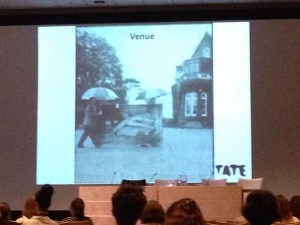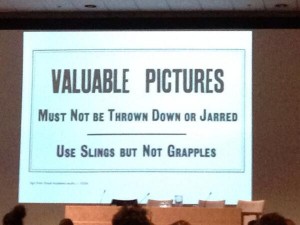EODEM 1.0, the Exhibition Object Data Exchange Model, was officially released on September 1st. But why should you, a registrar, be excited about those five letters? Isn’t it just another standard in a museum world that doesn’t lack standards – but is short of people, money, time, and, every so often, the institutional buy-in to enforce those standards?
Well, first of all, it isn’t a standard: it is an exchange model. That’s right, this isn’t something that will force you to restructure your data – although, seriously, there are good reasons to do so while you are at it, and EODEM itself is defined as a profile of the LIDO standard. EODEM is something that will enable you to exchange the data you already have about your objects with other colleagues. Something you most likely already do when you are lending, borrowing, and/or co-operating with other institutions for exhibitions.
So the tedious task of typing data from a spreadsheet or email you received from another institution could become a thing of the past with EODEM! If it is implemented, you can just import the EODEM file your colleague sent you and the information will appear in exactly the fields in your database where you need them to be. It doesn’t matter what collections management system your colleague uses. If one system can create an EODEM file from its data, you will be able to import that EODEM file in whatever system you are using!

There is one big if, though: just because EODEM is out doesn’t mean it is already in your collections management system. The good news: EODEM was developed together with vendors, so, right from the start, this model was built in a way that should make it easy to implement it in most collections management systems. The bad news? Vendors of collections management systems are not big software companies, just as the museum field isn’t a big industry. So, there isn’t an armada of developers idly waiting for EODEM to be ready for them to bring it into their systems. Instead, EODEM is competing with a lot of other things to be implemented, developed, and/or fixed.
And guess what? That’s where you come in.
The more users of a particular collections management system ask their vendor about when EODEM will be available to them, the more likely it will be to get a top spot on the roadmap. So, what you, yes, you, the only registrar on staff, the loan arranger, the museum professional who wears far too many hats, can do to export and import your exhibition data with a click of a button in the future, is simply to ask your vendor when you will see that option in your own database.
Nagging someone until they finally do it just because it is easier than saying “no” or “we will see about that” to you every single time sounds familiar to you? Ha! Thought so! It is basically the job description of a registrar. Which means, you will get EODEM if you put your mind to it.
You got this!
Angela
Learn more about EODEM:
All about EODEM on the CIDOC website:
EODEM specifications and samples:
Rupert Shepherd keeps you up to date with the development on his personal website:


